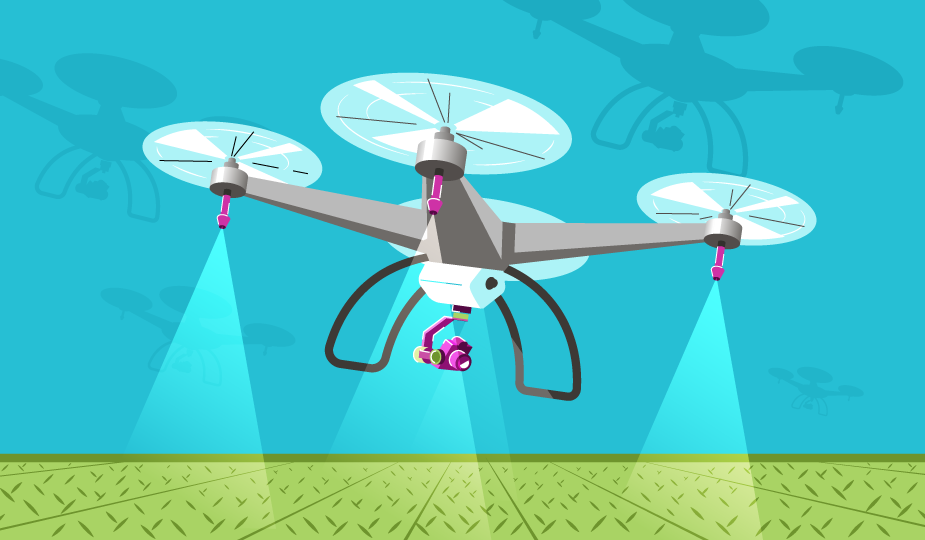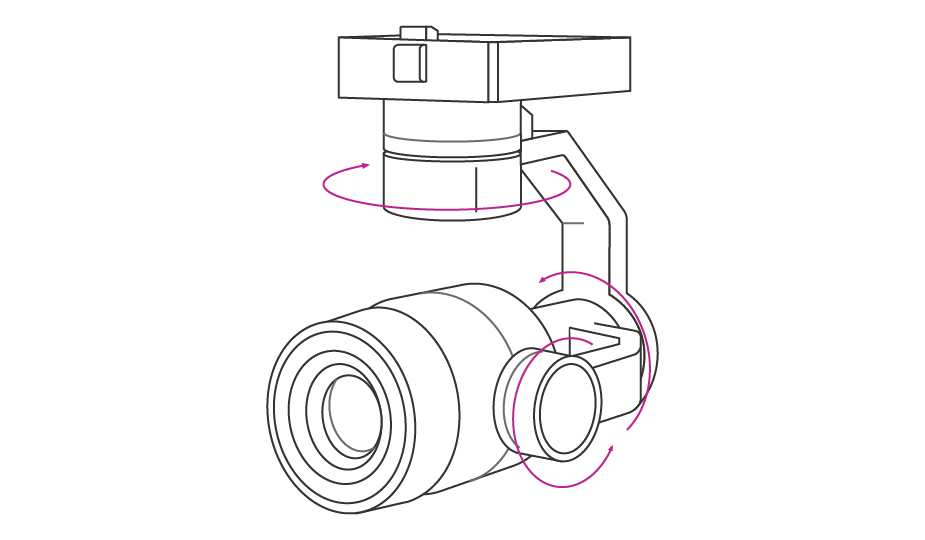Integrating AMT Encoders into Drone Payload Systems

Unmanned aerial vehicles, commonly known as drones, have evolved far beyond recreational use. In modern days, they are used in a wide variety of industries ranging from agriculture and inspection to filmmaking, emergency response, and even military applications. As drones take on ever more complex tasks, the need for precise, reliable flight and payload control has grown in parallel. Whether stabilizing camera gimbals for clearer videos or managing the flow of agricultural spray systems, motion control accuracy is key. At the core of these precision systems is the encoder, a device that translates rotational motion into useful electronic signals. Among the different encoder options, the AMT series from Same Sky is an excellent option due to its durability, efficiency, and adaptability, which makes it an ideal choice for UAV payload applications.
Payload Motion Control Challenges in Drones
Because drones are deployed in diverse environments and must remain lightweight by design, designing a drone payload system presents a unique set of engineering challenges.
- Environmental exposure: Drones in agricultural, military, and many other environments work around significant amounts of dust, moisture, and temperature fluctuations. In addition, all drones are inherently subjected to significant amounts of vibration.
- Power efficiency: All payload components must minimize power consumption to preserve limited battery life.
- Space and weight constraints: Every gram counts when a drone’s motors need to directly oppose gravity for flight, and any payload system needs to deliver performance without adding unnecessary weight or bulk.
- Accuracy and reliability: In applications demanding precision, such as terrain mapping or agricultural spraying, consistent performance is essential.
To meet these demands, drone design engineers require components that are compact, rugged, and extremely precise. Encoders used in these systems must deliver reliable feedback in dynamic environments.
Utilizing AMT Encoders in Gimbals
Gimbals are mechanical devices used to stabilize an object and keep it level, no matter what external movements or rotations are encountered. They are often integrated into drones and help keep the payload stable in flight. These payloads can be one of many different applications, but camera gimbals are one of the most visible and well-known payload systems in modern drones. Whether these are filming aerial footage or providing real-time video for surveillance, gimbals need to stabilize the camera on multiple axes while the drone moves. Encoders play a crucial role here, providing real-time position feedback that allows the control system to counteract any undesired motion. The smoother and more precise the feedback, the better the image stability, which is critical for both artistic and analytical purposes.
Same Sky’s AMT encoders, which feature programmable resolution options, allow engineers to finely tune the responsiveness of their gimbal systems. Whether you’re designing for high-speed tracking or ultra-smooth cinematic movement, this flexibility can make a noticeable difference in performance.

Utilizing AMT Encoders in Agricultural Dispense Systems
Agricultural drones are revolutionizing precision farming by delivering fertilizers, pesticides, and even seeds exactly where they’re needed. To be effective, these systems must dispense materials in carefully controlled amounts and patterns. Using these systems properly and to their maximum efficiency yields significant improvements in different parts of the payload delivery system.
- Hatch opening control: Ensuring that hatches open and close at the right time and to the correct degree.
- Pump systems: Regulating flow rate for liquid dispensing.
- Rotating sprayers: Controlling speed, which, in conjunction with the pump systems, provides even application.
With high-resolution feedback from AMT encoders and smart, or even AI-driven control systems, these systems can adapt to different terrain, wind, and speed in real-time. These on-the-spot adjustments improve coverage while reducing waste, meaning higher yields at lower costs.
Why AMT Encoders are Ideal for Drone or UAV Payloads
Same Sky’s AMT encoders offer a set of features that directly support the demands and challenges of UAV payload design.
- Capacitive sensing technology: Unlike the more traditional optical encoders, AMT encoders’ capacitive sensing technology makes them inherently resistant to dust, dirt, and vibration. To read a more in-depth comparison between optical, magnetic, and capacitive sensing technologies, see our blog Capacitive, Magnetic, and Optical Encoders – Comparing the Technologies.
- Low power consumption: With low power demands, AMT encoders reduce the overall draw on the drone’s battery, helping to extend flight time. Read our blog on saving power in mobile robotics.
- Programmable resolution: This provides flexibility to match feedback precision to the specific needs of different subsystems.
- Modular design: Supports rapid prototyping by simplifying integration into compact or custom designs. Their variety of form factors even further supports the modularity of the AMT encoders.
- No optical components: This yields fewer moving parts to fail and an increased resistance to shock, dirt, and moisture.
- Multiple output formats: Different options, including incremental, absolute, and commutation signals, increase the flexibility of engineers when designing the systems.
結論
As drones and UAVs take on more specialized and demanding roles, the systems they carry must deliver consistent, accurate results in challenging environments. From gimbals to sprayers to applications we have not yet even envisioned, encoders are a foundational element of payload motion control. The AMT series of encoders from Same Sky offers a combination of durability, flexibility, and efficiency that makes them ideally suited for these drone applications.
主な取り組み
- Encoders are essential for precise motion control in drone payload systems.
- Drone payload systems face unique engineering challenges, such as limited space, stringent weight requirements, environmental exposure, and the need for energy-efficient components.
- Capacitive encoders offer advantages over optical and magnetic encoders, particularly in dusty, vibration-filled, outdoor conditions where reliability is critical.
- Same Sky’s AMT encoders are ideal for high-performance drone feedback systems because of their capacitive sensing technology, low power consumption, and modular design.




